Maintaining proper wall thickness is one of the most important aspects of designing custom injection molded parts. Overly thick walls not only waste material, they’re also more likely to exhibit part defects such as sink marks. On the other hand, overly thin walls are prone to warping and cracking, while also generally lacking the strength necessary for a durable end product.
In order to yield reliable high-strength molded parts, we try to maintain uniform thickness as much as possible while being careful to stay above the required minimum wall thickness for the specific type of plastic at hand. Beyond saving material, thinner walls typically cool faster for shorter cycle times, but we have to optimize the part design to ensure proper strength.
With that in mind, let’s take a closer look at the required minimum wall thicknesses for different injection molded plastics.
Minimum Wall Thickness for Injection Molded Plastic Materials
Due to their unique chemical compositions and mechanical properties, different types of injection molded plastics come with different requirements in minimum wall thickness. Though the optimum wall thickness will vary depending on your specific strength and performance requirements, here is a general chart giving the recommended minimum wall thickness for many of the most common injection molded plastics:
- Acrylonitrile Butadiene Styrene (ABS) – 0.045” (1.14 mm)
- Acrylic – 0.025” (0.64 mm)
- Fiber-Reinforced Plastics – 0.075” (1.91 mm)
- Nylon (PA) – 0.030” (0.76 mm)
- Polycarbonate (PC) – 0.040” (1.02 mm)
- Polyester – 0.025” (0.64 mm)
- Polyethylene (PE) – 0.030” (0.76 mm)
- Polyoxymethylene (POM, or Acetal) – 0.030” (0.76 mm)
- Polyurethane – 0.080” (2.03 mm)
The Essential Considerations for Designing Proper Wall Thickness:
Choose Your Material Wisely
As we laid out above, different plastics come with drastically different requirements in minimum as well as optimum wall thickness. Consider these requirements early on in the design process and potentially consider alternative materials to facilitate a more reliable and consistent production process.
Consider Adjacent Walls in Your Design
Wall thickness doesn’t exist in a vacuum – nearby and adjacent walls can affect the minimum thickness requirement. When it comes to designing your part, no wall should have a thickness that is less than 40 to 60 percent of the walls adjacent to it. If they do, then the flow may stall which will make the final fill more difficult.
Transitional Wall Thickness
Sections of molded part where wall thickness changes are particularly susceptible to issues. Part designs should smooth transition zones out as much as possible, potentially altering the minimum wall thickness needed in different sections.
Avoid Sharp Corners and Unsupported Walls
Sharp internal corners and long unsupported spans make maintaining uniform thickness more difficult. They also raise the likelihood of part defects and inconsistencies – especially in the case of relatively thin walls.
Use Proper Draft Angles
Draft angle is another crucial aspect when it comes to achieving strong and consistent injection molded parts. Regardless of the wall thickness requirements, your parts must be designed to accommodate proper draft angle, keeping it as consistent as possible throughout the part.
Ribs for High-Strength, Thin-Wall Injection Molded Parts
If you’re trying to keep walls as thin as possible, you can use ribs to increase strength rather than increasing the thickness of a wall. However, ribs must be designed carefully, as the position and orientation of a rib relative to load and reaction forces is critical to its effectiveness.
Generally, ribs should be around 50 to 60 percent of the nominal wall thickness. If it is thicker, then it is likely a sink mark will appear on the external surface since there will be a localized area of thickness. For maximum effectiveness, rib height should be no more than three times the nominal wall thickness. (Since the rib will be thinner than the wall, it may be hard to fill it if it is taller.) Ribs should be spaced a minimum of two times the nominal wall thickness apart from one another. A minimum 1 degree draft will ensure that they release from the tool during molding. Finally, the radii at feature intersections should be a minimum of 0.5 - 1.0x nominal wall thickness to increase rib strength.
Custom Injection Molding Services for High-Strength Parts
AIM Processing works closely with customers in order to optimize injection molded part designs and achieve the quality, strength, and consistency required for the end products. From choosing the optimum plastic material for the application to designing ribs and other complex part features, we help ensure the highest quality molded parts possible.

 SINCE 1993 MADE IN USA
SINCE 1993 MADE IN USA 

